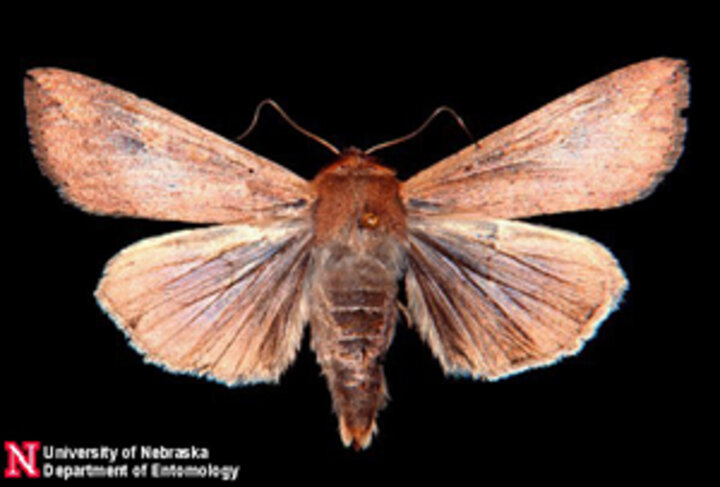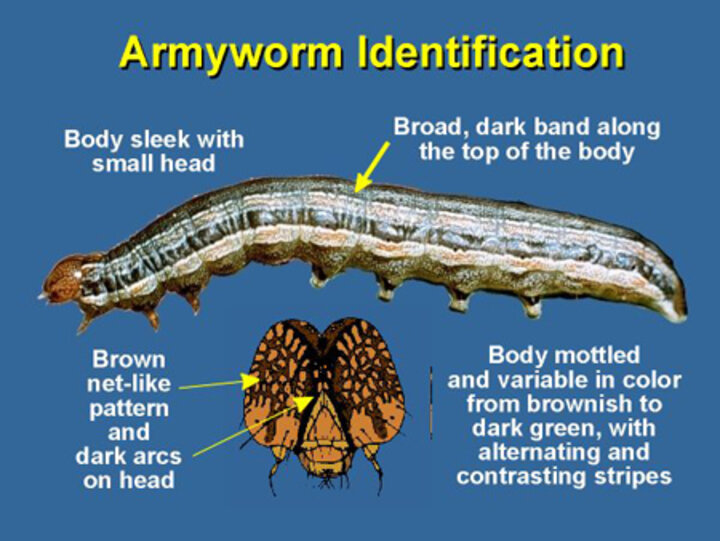June 22, 2007
There has been an abundance of true armyworms (Pseudaletia unipuncta) this spring in states to our south, such as Oklahoma and Kansas. Apparently the moths have now moved into Nebraska, based on recent black light trap catches.

|
| Figure 1. Armyworm moth ( UNL IANR Photos) |

|
| Figure 2. Severe armyworm damage to corn, with only mid-rib remaining on many of the lower leaves.. |
Armyworm moths lay masses of cream colored eggs, which will hatch out in five to seven days, depending on temperature. Armyworm caterpillars feed by chewing on the leaf blades of grasses, leaving just the mid-rib. In corn and small grains, damage is first noted on the lower leaves. If abundant, they may continue moving up the plant, feeding on leaves.
Often damage starts on the edge of a field, in grassy borders, or where the field borders grassy pastures. If there are grassy weeds in a corn field, damage may start there and then move to corn.
Armyworms feed mostly at night, so finding the caterpillars in the field may be difficult. During the day they may be found hiding in the soil around the base of damaged plants.

|
| Figure 3. Distinguishing characteristics of an armyworm larvae. |
When high populations of armyworms develop in an area, they may strip all the preferred plants leaves, and at that point large numbers may "march" in mass (hence the name armyworm) in search of another food source.
Larvae typically feed on grassy plants. At this time of year grass pastures or wheat fields (if not too mature), as well as grassy field edges or grassy weeds in crop fields, may support armyworm populations.
Economic thresholds are not well developed, but Purdue University recommends treatment in corn if more than 50% of plants have armyworm feeding damage, and live armyworms less than 1.25 inches long are numerous. A variety of insecticides may be used to control armyworms. Light trap data are now available online at http://entomology.unl.edu/fldcrops/ for traps at Clay Center, Concord and North Platte.
Bob Wright
Extension Entomologist
